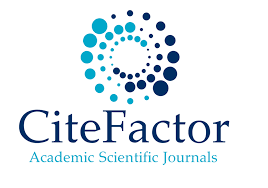FAKTOR FAKTOR YANG MEMPENGARUHI KONSERVATISME AKUNTANSI PADA PERUSAHAAN SEKTOR TRANSPORTASI DAN LOGISTIK YANG TERDAFTAR DI BURSA EFEK INDONESIA
DOI:
https://doi.org/10.36277/geoekonomi.v15i1.2024.436Keywords:
Accounting conservatism, Financial Distress, Debt covenant, Company size, Growth opportunityAbstract
Accounting conservatism is a form of prudence carried out by management in disclosing its financial statements. This study aims to determine the effect of financial distress (FD), debt covenant (DAR), company size (UP), and growth opportunity (GO) on accounting conservatism (CONACC) in transportation and logistics sector companies listed on the Indonesia Stock Exchange for the 2017-2022 period both simultaneously and partially. The population in this study is transportation and logistics sector companies listed on the Indonesia Stock Exchange for the 2017-2022 period. The sampling technique uses purposive sampling. This research is a quantitative research using secondary data. The method used in this study is multiple linear regression analysis. The result of this study is that financial distress and company size partially affect negatively and significantly, while debt to assets ratio and growth opportunitiy do not have a positive and insignificant effect on accounting conservatism. While simultaneous financial distress, debt to asset ratio, company size, and growth opportunity have a significant effect on accounting conservatism. Companies are expected to apply accounting conservatism in the preparation of financial statements to ensure accurate and relevant information.
Downloads
References
Bringham, E. F., & Houston J. L. (2019). Fundamental of Financial Management. Cengange Learning.
Ervina. (2022). Faktor-faktor yang berhubungan dengan hipertensi ada pekerja sektor di wilayah kerja Puskesmas kecamatan jagakarsa tahun 2022. UIN Syarif Hidayatullah .
Fahmi, I. (2015). Analisis Laporan Keuangan . Alfabeta .
Fikri, M., Abbas, D., Zulaecha, H., & Kismanah, I. (2022). Pengaruh Kepemilikan Manajerial, Leverage, Finansial Distress, dan Ukuran Perusahaan. Digital Bisnis: Jurnal Publikasi Ilmu Manajemen Dan E-Commerce, 1(3), 87–107.
Givoly, D., & Hayn, D. (2018). The changing time-series properties of earnings, cash flows and accruals: Has financial reporting become more conservative. Journal of Accounting and Economics , 19(3), 287–320.
Grave, A., Suciati, F., & Lestari, B. (2022). Pengantar Akuntansi. PT. Global Eksekutif Teknologi.
Hartono, J. (2019). Teori Portofolio dan Analisis Investasi . BPFE.
Hery. (2016). Akuntansi Dasar. PT Grasindo.
Ikatan Akuntan Indonesia. (2019). Standar Akuntansi Keuangan. Salemba Empat.
Jensen, C., & Meckling, H. (1976). Theory of The Firm: Managerial Behavior, Agency Costs, and Ownership Structure. Journal of Financial Economics, 3(4).
Kasmir. (2018). Analisis Laporan Keuangan. PT Raja Grafindo Persada.
Nanda, P., & Yunilma. (2020). Pengaruh Struktur Kepemilikan, Intensitas Modal, Dividend Payout Ratio, Financial Distress dan Debt To Covenant Terhadap Konservatisme Akuntansi. Akuntansi Dan Keungan, 3(1).
Puspita, D., & Srimindarti, C. (2023). Pengaruh Growth opportunity, Intensitas Modal dan Ukuran Perusahaan terhadap Konservatisme Akuntansi pada perusahaan sektor Transportasi dan logistik yang Terdaftar di Bursa Efek Indonesia Tahun 2018-2021. Journal of Economics and Business, 7(2), 1450–1455.
Rasmon, & Safrizal. (2022). Pengaruh Financial distress dan Insentif Pajak Terhadap Konservatisme Akuntansi (Studi Pada Perusahaan Sektor Transportasi yang Terdaftar di BEI Periode 2017-2019). Jurnal IAKP, 3(2). https://doi.org/https://doi.org/10.35314/iakp.v3i2.2898
Riyadi, W. (2022). Pengaruh Financial Distress Dan Leverage Terhadao Konservatisme Akuntansi. Jurnal Ekonomi Bisnis , 10(2). https://doi.org/https://doi.org/10.56689/ekbis.v10i2.856
Sartono, A. (2016). Manajemen Keuangan Teori dan Aplikasi. BPFE.
Savitri, D. (2016). Konservatisme Akuntansi (Musfialdi, Ed.; 1st ed.). Pustaka Sahila Yogyakarta.
Sawir. (2015). Manajemen Keuangan Teori dan Praktik . Penerbit Kencana .
Sea, M., & Noor, A. (2022). Pengaruh debt convenant, growth opportunity dan bonus plan terhadap konservatisme akuntansi. Akuntansi Keuangan, 19(3), 586–597.
Sonia, Andini, R., & Raharjo, K. (2022). The Effect Of Company Growth, Investment Opportunity Set, Debt Convenant, Capital Intensity, And Litigation Risk On Accounting Conservatism.
Supriyono, R. A. (2018). Akuntansi Keperilakuan. UGM Press.
Suwardjono. (2017). Teori Akuntansi Perekayasaan Pelaporan Keuangan . BPFE.
Utari, D., Purwanti, A., & Prawironegoro, darsono. (2014). Menejemen Keuangan : Kajian Praktik dan Teori dalam Mengelola Keuangan Organisasi Perusahaan. Mitra Wacana.
Wahyono, teguh, & Pujiatmoko, L. (2018). Sistem Informasi Akuntansi. Elex Media Komputindo.
Watts, R., & Zimmerman, J. (1978). Towards a Positive Theory of the Determination of Accounting Standards. The Accounting Review, 53(1).
Yanti, F., Azmi, Z., & Ahyaruddin, M. (2022). Pengaruh Debt Covenant, Leverage, Growth Opportunities dan Financial Distress terhadap Konservatisme Akuntansi. Ilmiah Akuntansi, 6(1).
Downloads
Published
How to Cite
Issue
Section
License
Copyright (c) 2024 Jurnal GeoEkonomi

This work is licensed under a Creative Commons Attribution 4.0 International License.
You are free to:
Share - copy and redistribute the materials in any medium or format for any purpose, even for commercial purposes.
Adapt - compose, change and develop the material for any purpose, even for commercial purposes.
The licensor cannot revoke these freedoms as long as you follow the license terms.
With the following conditions:
Attribution - you must give appropriate credit, provide a link to the license, and indicate if changes have been made. You may do so in a reasonable manner, but not in any way that suggests that the licensor endorses you or your use.
No additional restrictions - You may not implement legal provisions or technological measures that legally restrict others from doing anything permitted by the license.
Notice:
You do not have to comply with the license for elements of the material that are in the public domain or where your use is permitted by an applicable exclusion or restriction.
No warranties are given. This license may not grant all the permissions necessary for your intended use. For example, other rights such as publicity, privacy, or moral rights may limit how you use the material.







_geoekonomi.png)
_geoekonomi.png)
















